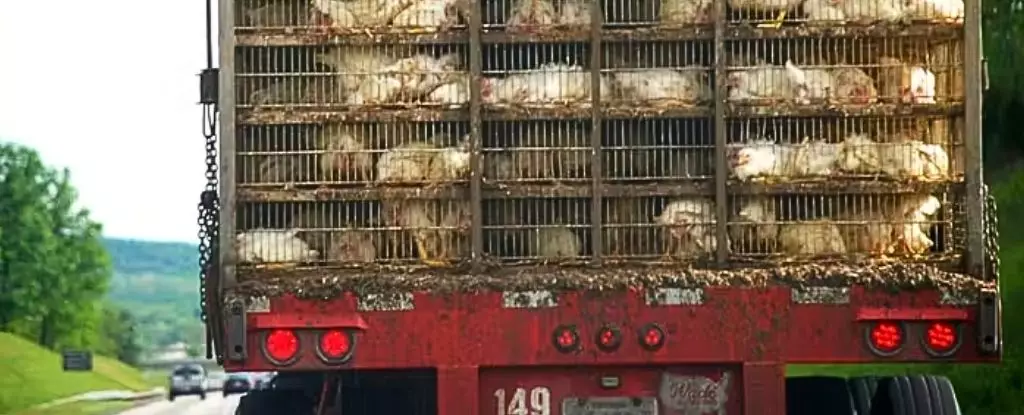Disease forecasting has often been likened to the predictions made by meteorologists. Just as we can’t perfectly predict the nuances of a storm, we often lack the precision to forecast the details of a viral outbreak. However, we are uniquely positioned to detect emerging threats and prepare ourselves accordingly. The avian influenza virus, specifically the H5N1 subtype, has galvanized the attention of researchers and health officials alike, illuminating the urgent need for public awareness and proactive measures. While human outbreaks from H5N1 have remained relatively rare—just over 900 known cases since 2003—these statistics mask a grim reality: nearly half of these cases have been fatal. The mortality rate associated with H5N1 is approximately 20 times higher than that of the notorious 1918 flu pandemic. Should this virus adapt to spread efficiently among humans, the consequences could be catastrophic. It is more critical than ever that we confront our collective complacency around such diseases.
A Reflection on Historical Intersection of Humans and Viruses
In examining the long historical trajectory of infectious diseases, especially within the context of the last 10,000 years of human civilization, it becomes alarming clear that our behaviors are intricately linked to the evolution of these pathogens. H5N1 exhibits a methodical pattern of zoonotic transmission, gradually encroaching upon human populations in a way that mirrors many past epidemics. As researchers and authors of the book “Emerging Infections: Three Epidemiological Transitions from Prehistory to the Present,” my colleagues and I have laid bare how human interactions with animals serve as a crucible for deadly pathogens, ultimately reshaping the trajectory of infectious diseases. Our anthropological perspective offers a crucial lens through which we can examine our role as enablers of these viruses, illustrating the need for widespread societal change.
The Mechanics of Spillover: A Complex Process
The mechanism of spillover—the process through which a virus jumps from animals to humans—represents a complex ballet of biological adaptations. For a pathogen to leap into a new host, it needs the right “keys” to unlock the host’s cells. This process requires a specific combination of molecular adaptations, each potentially hindered by evolutionary constraints and the inherent randomness of mutation. Because different species exhibit varying molecular structures, it stands to reason that a virus might find its evolutionary path stymied; the challenge of establishing a foothold in humans makes an already precarious situation all the more fragile. We’ve observed this with H5N1 in recent years; while its presence has been alarming in agricultural settings, human cases have mostly been confined to those working in close proximity to infected animals. The gradual rise of sporadic human infections, referred to as “viral chatter,” serves as a harbinger of a potential pandemic.
The Dangers of Viral Chatter
Describing isolated human cases of H5N1 as “viral chatter” perfectly encapsulates the unsettling reality we face. Each case may seem disconnected, yet they collectively broadcast a troubling signal: human-to-human transmission is increasingly probable. The continuous evolution of influenza viruses, spurred on by the co-infection of multiple strains within the same host, exacerbates our peril. With H5N1 now documented in over 450 different animal species, the threat of an epidemic is ever-looming, especially when considering the myriad environments in which the virus can mutate. We cannot afford to ignore these warnings—a crisis is on the horizon, and it demands our immediate attention.
Taking Action: Collective Responsibility
It’s not all doom and gloom. There exists a pathway toward mitigating the human peril posed by H5N1 if we take decisive action now. Initiating basic biosecurity measures in agricultural practices would be an important initial step. With the world’s poultry population surpassing that of wild birds, the nexus between industrial poultry farming and the transmission of avian influenza cannot be overstated. Achieving a nuanced balance where we respect ecological integrity alongside agricultural productivity could significantly impede H5N1’s evolutionary trajectory.
On an individual level, vaccination remains a critical tool in our arsenal against influenza, allowing us to create a barricade against further mutations that could enable viruses like H5N1 to thrive in human populations. Moreover, collective efforts to uplift the living conditions of the world’s poorest, improving nutrition and sanitation, will ultimately strengthen our defenses against a host of infectious diseases. The interconnectedness of our world necessitates that we recognize that no society exists in isolation—disease knows no borders. Our historical relationship with pathogens is replete with lessons; it is time for humanity to reshape that legacy for better outcomes. The question remains—will we act in time?

